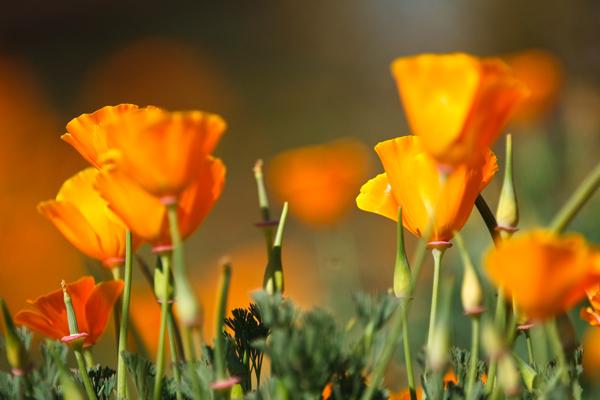Half or more of our water is consumed watering lawns and outdoor gardens, so water-efficient gardening and lawn care can have a significant impact on water conservation and water bills. In the face of the current California drought, it is especially important to save water where possible. Follow these guidelines when watering lawns and gardens to ensure that your plants get the most out of each drop.
Watering times
The best time to water lawns and gardens is at night between the hours of 10 p.m. and 8 a.m. Watering at these times reduces evaporation caused by the sun and the wind and allows soil and plants to soak and absorb water over a longer period of time.
The ideal duration of a watering cycle will vary depending on the type of device being employed, as well as the type of soil and how much water your specific plants need to be healthy and robust. Hard-packed clay will not absorb water quickly, so a short watering cycle of five minutes or less will be best to reduce runoff. Sandy or loamy soil can absorb water more readily and can be watered for longer durations to greater effect, but be sure to shut off the water before runoff takes your precious soil away from your garden or lawn.
Watering frequency should be changed each season to adapt to different weather patterns and plant requirements. In the summer, the heat will tend to dry out plants but it is still best to water no more than three times a week. Pay attention to local weather patterns and the appearance of plants and lawns. Skip a scheduled watering if a lawn is springy and green or if there have been recent rains. In the spring and fall, watering should be kept to no more than once or twice a week during these seasons. In winter, watering is usually not needed due to rainfall.
Watering devices
Watering devices attached to a programmable timer will provide the most consistency once they are set up. One of the best ways to water specific plants in a garden is with a custom laid drip irrigation hose that snakes its way right by each plant needs watering.
Group plants that require similar watering schedules together so it is easier to arrange your drip system and schedule watering. Timed sprinklers are a great option for watering lawns, but they often apply water more quickly than it can be absorbed by the soil. To mitigate this, replace the standard nozzle head with a rotating head that applies the water more slowly and to a wider area. Another option is to change the watering schedule to spread out short watering events over the course of the day (or night) to allow the soil to absorb more water from each event.
For plants that require hearty watering like saplings, a bubbler may be applied. Be aware that bubblers apply water often much faster than the soil can absorb it. It is important be aware of runoff and building a barrier to keep the water where it is needed may be appropriate.
Common irrigation challenges
Even with a perfectly set up and timed irrigation system, it is important to keep up with maintenance of your system and to change schedules along with the weather and seasons. In areas of heavy traffic it is common for nozzles and irrigation lines to be broken.
Be aware of soggy areas in the ground that could indicate a broken/leaking line or nozzle that is applying too much water to one location. Sprinkler nozzles can also become ineffective over time due to the changing plants around them, erosion or from being bumped by foot traffic or lawn equipment.
Make sure sprinklers are not watering sidewalks, walkways or buildings, and adjust the nozzle accordingly if they are. Plants can also grow up around sprinklers and block the flow of water, making it necessary to trim the plant back, adjust the nozzle or apply a riser to redirect the stream.
